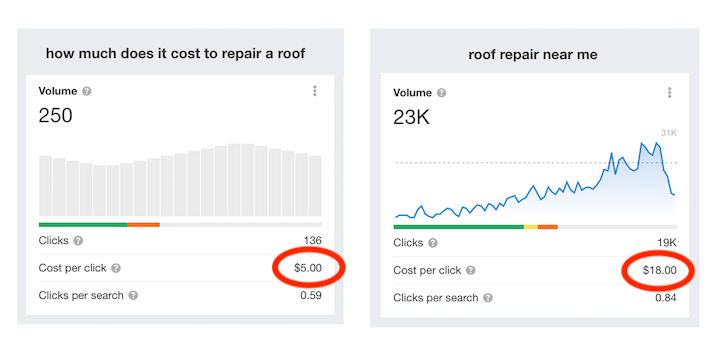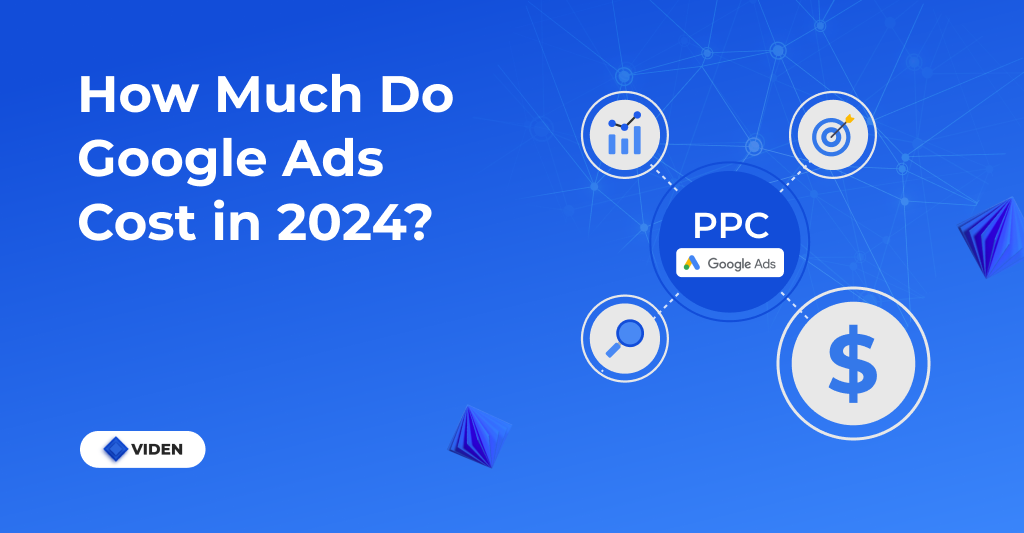Google Ads costs vary widely, typically between $1 to $2 per click on the Search Network. Monthly costs often range from $1,000 to $10,000.
Google Ads is a flexible advertising platform that allows businesses to set their own budgets. Small businesses can start with modest amounts, while larger companies may invest heavily. The cost per click (CPC) depends on factors like industry competition, keyword demand, and quality score.
Advertisers bid on keywords, which affects their ad placement and cost. Proper management and optimization can maximize returns and control expenses. Effective Google Ads campaigns can drive targeted traffic, increase conversions, and boost sales. Understanding the cost dynamics helps businesses allocate their budget efficiently.

Credit: www.wordstream.com
Introduction To Google Ads
Google Ads is a popular tool in digital marketing. It helps businesses reach their target audience. Companies can show their ads to users who search for related terms. This makes advertising more effective and efficient.
The Role Of Google Ads In Digital Marketing
Google Ads plays a crucial role in digital marketing. It allows businesses to appear on the first page of search results. This increases visibility and drives more traffic to their websites. Higher visibility often leads to more clicks and conversions.
Key Benefits For Businesses
Google Ads offers many benefits for businesses. It provides targeted advertising and cost control. Companies can set their own budgets and adjust them as needed. This flexibility makes it easier to manage advertising costs.

Credit: clictadigital.com
Factors Influencing Google Ads Cost
The industry you are in can affect costs. Highly competitive industries have higher costs. Niches with fewer competitors are cheaper. Popular industries like finance or law are costly. Less popular industries have lower costs.
Quality Score impacts your costs. A higher Quality Score can lower costs. Ad Rank also plays a role. Better Ad Rank means better placement. This can reduce costs too. Focus on improving these scores. It helps in saving money.
The keywords you pick matter. High-demand keywords cost more. Low-demand keywords are cheaper. CPC, or Cost Per Click, varies with keywords. Choosing the right keywords is crucial. It can help manage your budget effectively.
Average Costs Across Industries
Google Ads costs vary widely based on industry and competition. On average, businesses spend between $1 to $2 per click. High-demand sectors may see higher costs.
Benchmarking Your Budget
Costs can vary greatly. Some industries have higher costs per click. Others are cheaper. The average cost per click is around $2.69. But this depends on the industry.
High-cost Vs. Low-cost Sectors
Legal and financial industries often have high costs. Health and insurance are also expensive. Retail and e-commerce usually cost less. Education and travel tend to be in the middle.
| Industry | Average CPC |
|---|---|
| Legal | $6.75 |
| Financial | $5.85 |
| Health | $2.85 |
| Retail | $1.35 |
Strategies For Budget Management
Goals must be clear and realistic. Set specific targets like clicks or conversions. This helps in tracking performance. Adjust goals based on your business needs. Smaller goals can be more manageable.
Control your budget by setting a daily limit. This prevents overspending. You can start with a small amount. Increase it gradually based on results. Use Google Ads tools to monitor your spending.
Optimize your campaigns to get better results. Use keywords that are cost-effective. Focus on high quality scores to lower costs. Regularly review and adjust your ads. A/B testing can help find the best performing ads.
Success Stories: Budgets That Worked
A small bakery spent just $500 on Google Ads. They saw their sales double within a month. Their ad reached local customers looking for fresh bread. The bakery owner was thrilled. They never thought a small budget could bring such big results. Another small business, a local gym, used $1,000 for ads. They gained 50 new members in two weeks. The gym owner was amazed at the return on investment.
A large retail chain invested $50,000 in Google Ads. Their online sales increased by 30% in one quarter. The ad campaign targeted customers across the country. A tech giant spent $200,000 on ads and saw a significant boost in software subscriptions. They focused on key markets and saw impressive results. Large enterprises often have bigger budgets. This allows them to reach a wider audience.

Credit: videnglobe.com
Navigating Your Google Ads Investment
Monitoring your campaign is very important. If you see positive results, consider increasing your budget. More clicks can mean more sales. Ensure your return on investment (ROI) is high. It’s good to test different budget levels. This helps find the sweet spot. Adjusting your budget can lead to better performance. The right budget can maximize your profits.
Professional help can make a big difference. Experts know how to optimize your ads. They can improve your ad quality and targeting. This can save you time and money. Professionals can track your performance metrics. They provide insights to boost your campaigns. Their expertise can lead to higher conversion rates.
Frequently Asked Questions
How Much Do You Pay For Google Ads?
The cost of Google Ads varies. Factors include industry, keywords, and competition. On average, businesses spend $1 to $2 per click.
Is $500 Dollars Enough For Google Ads?
Yes, $500 can be enough for Google Ads. It depends on your campaign goals, targeting, and industry competition.
Do Google Ads Charge Monthly?
Google Ads charges are not monthly. You pay based on your daily budget and actual ad performance.
How Much Should A Small Business Spend On Google Ads?
Small businesses should spend 5-10% of their revenue on Google Ads. Start small and adjust based on results.
What Is The Minimum Budget For Google Ads?
The minimum budget for Google Ads is flexible, starting from as low as $1 per day.
Conclusion
Understanding the cost of Google Ads is crucial for budget planning. It varies based on industry, competition, and strategy. By monitoring performance and adjusting bids, you can optimize spending. Investing wisely in Google Ads can yield significant returns. Keep experimenting to find what works best for your business.
